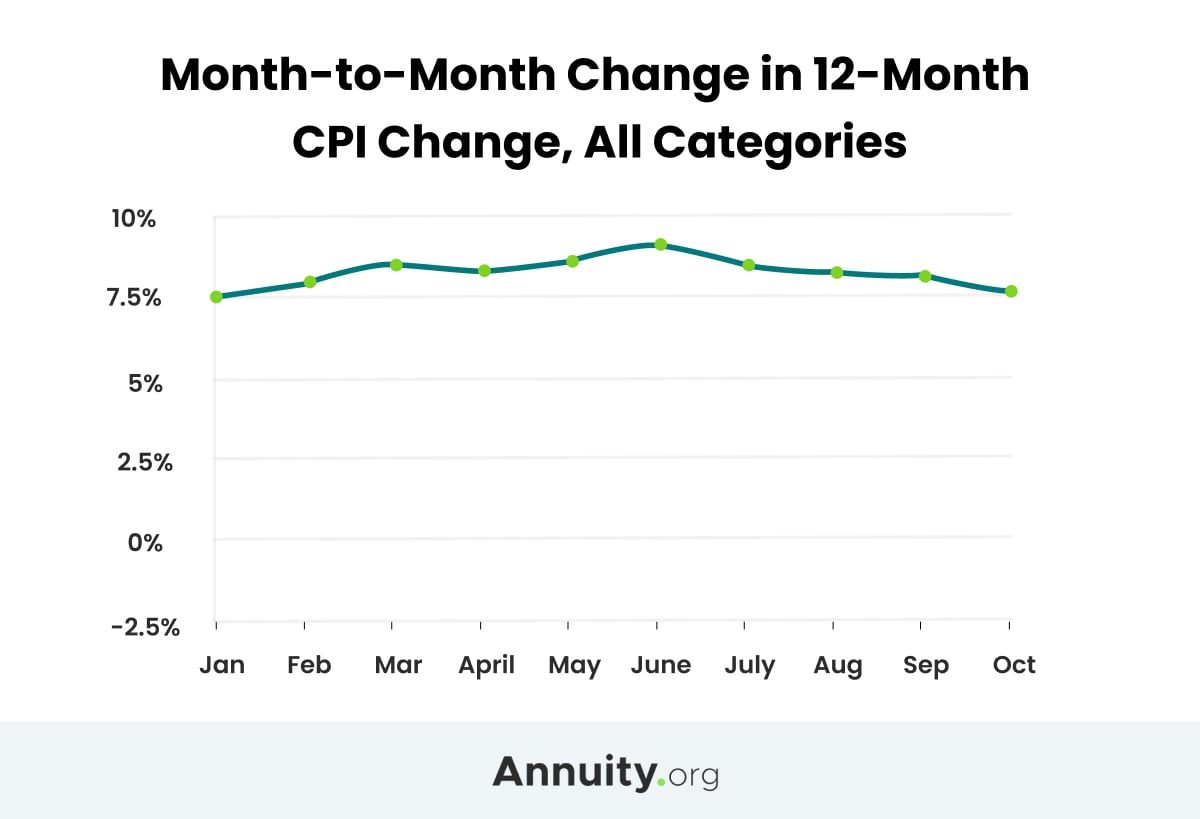 Source: U.S. Bureau of Labor Statistics
Source: U.S. Bureau of Labor StatisticsInvesting for Inflation

- Written By Thomas J. Brock, CFA®, CPAThomas J. Brock, CFA®, CPA
Thomas J. Brock, CFA®, CPA
Investment, Corporate Finance and Accounting Professional
Thomas Brock, CFA®, CPA, is a financial professional with over 20 years of experience in investments, corporate finance and accounting. He currently oversees the investment operation for a $4 billion super-regional insurance carrier.
Read More - Edited By
Lamia ChowdhuryLamia Chowdhury

Lamia Chowdhury
Financial Editor
Lamia Chowdhury is a financial editor at Annuity.org. Lamia carries an extensive skillset in the content marketing field, and her work as a copywriter spans industries as diverse as finance, health care, travel and restaurants.
Read More - Published: December 19, 2022
- 3 min read time
- This page features 2 Cited Research Articles
 Source: U.S. Bureau of Labor Statistics
Source: U.S. Bureau of Labor Statistics
